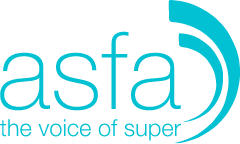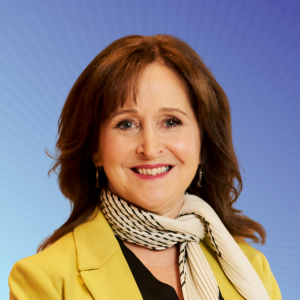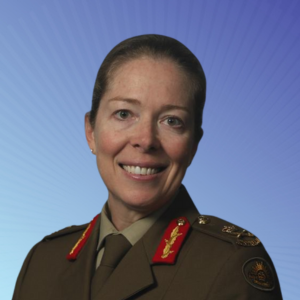31 January 2014
Higher cost of living increasing pressure on retirement savings: ASFA Retirement Standard December quarter
Australians will need to save more to fund the lifestyle they want in retirement, according to new figures released by the Association of Superannuation Funds of Australia (ASFA).
Australians seeking a ‘comfortable’ retirement will need to spend 0.8 per cent more as a result of price changes in the December quarter, with the annual expenditure rising to $57,665 for couples and $42,158 for singles. In order to achieve this, a couple would need a combined superannuation balance of around $510,000 and a single individual would need a balance of around $430,000.
Budgets for a ‘modest’ retirement lifestyle were slightly less affected, with the annual budget increasing by 0.7 per cent to $33,358 for couples and 0.6 per cent to $23,175 for singles.
Over the year to the December quarter, the cost of retirement increased by 2.4 per cent at the comfortable level and 2.6 per cent at the modest level.
Retiree budgets were subject to a steep rise in the cost of fruit (+8.1 per cent), vegetables (+7.1 per cent) and domestic holiday accommodation (+6.9 per cent), but this was partially offset by a drop in fuel prices (-1.1 per cent) in the December quarter.
ASFA CEO Ms Pauline Vamos said the figures highlight the increasing importance of people planning and saving for their retirement.
“Most people have a picture of how they want to spend their post-work years, like travelling or relaxing without the stress of money worries. However, research continues to indicate that many Australians will retire without enough savings to live the lifestyle they want to in their post-work years. As the cost of living continues to increase, so too will the pressure to save more.
“Making small sacrifices today can help deliver a massive boost to your retirement savings, which is why it’s crucially important to plan for your retirement now. This may include saving a little more each week, so you can benefit later, or looking at strategies that can help safeguard you against running out of money in your later retirement years,” said Ms Vamos.
As policy makers turn their minds to the upcoming federal Budget, Ms Vamos also urged them to consider how the price increases impact retirees differently to the rest of the population and tailor policies accordingly.
“The expenditure required to live a modest lifestyle in retirement only requires a small amount of retirement savings in addition to the Age Pension, however in this category, budgets are tight and vulnerable to price fluctuations when it comes to areas where there is less discretionary choice.
“This means that when there is a substantial increase in the cost of basic items, it has the potential to hit retirees hard. Retirees also tend to spend more on health services than the general population, so it’s encouraging to see prices for consumers in this area did not increase this quarter.
“It’s important policy makers take into account these different spending patterns when it comes to setting policies for this group,” Ms Vamos concluded.
Table 1: Budgets for various households and living standards (December quarter 2013, national)
| Modest lifestyle – single | Modest lifestyle – couple | Comfortable lifestyle – single | Comfortable lifestyle – couple | |
|---|---|---|---|---|
| Housing – ongoing only | $63.40 | $60.86 | $73.48 | $85.18 |
| Energy | $42.98 | $57.09 | $43.62 | $59.16 |
| Food | $75.64 | $156.69 | $108.06 | $194.51 |
| Clothing | $17.96 | $29.15 | $38.87 | $58.30 |
| Household goods and services | $26.57 | $36.03 | $74.75 | $87.57 |
| Health | $38.59 | $74.48 | $76.56 | $135.12 |
| Transport | $95.78 | $98.49 | $142.73 | $145.44 |
| Leisure | $73.93 | $110.14 | $224.03 | $307.01 |
| Communications | $9.61 | $16.82 | $26.41 | $33.61 |
| Total per week | $444.46 | $639.74 | $808.51 | $1,105.91 |
| Total per year | $23,175 | $33,358 | $42,158 | $57,665 |
The figures in each case assume that the retiree/s own their own home and relate to expenditure by the household. This can be greater than household income after income tax where there is a drawdown on capital over the period of retirement. Single calculations are based on female figures. All calculations are weekly, unless otherwise stated.
Explanatory notes
The rise in domestic holiday travel and accommodation was mainly due to increased prices during the Christmas and summer school holiday period. The increase in international airfares also was seasonal.
Prices for clothing and footwear fell in the December quarter 2013. The main contributor to the fall was in the price of garments for women (-1.4 per cent). Over the 12 months to the December quarter 2013, prices for clothing and footwear fell by 1.3 per cent.
Super balances required to achieve a comfortable or modest lifestyle in retirement
In order to fund a comfortable lifestyle in retirement, a couple would need a combined balance of around $510,000 in superannuation and other income-producing assets. This estimate is based on two assumptions:
- both members of the couple do not retire before qualifying for the Age Pension
- over retirement, the couple will receive at least a part Age Pension, which may increase to be the full Age Pension as they draw down on their superannuation savings.
For a single person, the amount of superannuation and other savings needed to support a comfortable lifestyle in retirement is around $430,000. Again, this assumes receipt of at least a part Age Pension for most of their retirement, with the Age Pension component increasing as superannuation savings are drawn down.
The Age Pension covers most of the expenditure required to achieve a modest lifestyle in retirement. This means a single person will need around $30 a week from their super to supplement the income received from the Age Pension in order to achieve a modest lifestyle. This would require a superannuation balance of around $50,000. Similarly, a couple would need to supplement the Age Pension with around $16 per week from their super, requiring combined savings of around $35,000. The reason that the required retirement savings amounts are relatively low is that, after recent increases, the Age Pension is not far short of the budgets required for a modest standard of living in retirement.
More information
Costs and summary figures can be accessed via the ASFA website. The ASFA Retirement Standard Calculator can be used to obtain a breakdown of the Retirement Standard budgets for each state.
About the ASFA Retirement Standard
The ASFA Retirement Standard is an initiative by the Association of Superannuation Funds of Australia (ASFA), benchmarking the annual budget needed by Australians to fund either a ‘comfortable’ or ‘modest’ standard of living in people’s post-work years.
It is updated quarterly to reflect inflation and provides detailed budgets of what singles and couples would need to spend to support their chosen lifestyle.
Modest lifestyle in retirement
Better than the Age Pension, but people are still only able to afford fairly basic activities.
Comfortable retirement lifestyle
Enabling an older, healthy retiree to be involved in a broad range of leisure and recreational activities, and to have a good standard of living through the purchase of such things as: household goods, private health insurance, a reasonable car, good clothes, a range of electronic equipment, and domestic and occasional international holiday travel.
For further information, please contact:
Lisa Chikarovski, Media Manager, 0451 949 300.
About ASFA
ASFA is the peak policy, research and advocacy body for Australia’s superannuation industry. It is a not-for-profit, sector-neutral, and non-party political national organisation, which aims is to advance effective retirement outcomes for members of funds through research, advocacy and the development of policy and industry best practice.
































